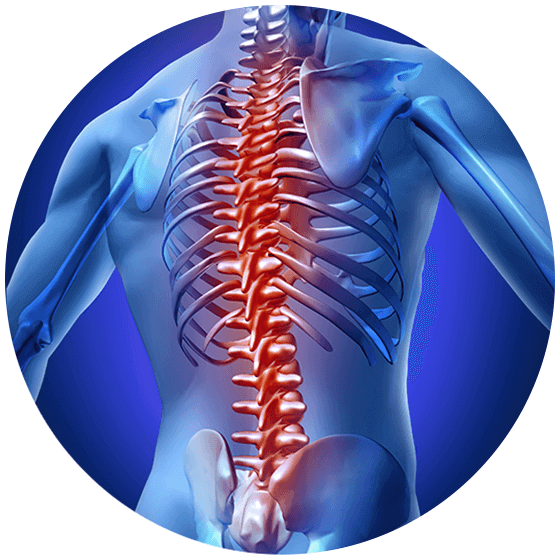Spondylosis

Spondylosis Symptoms & Treatment Options
The spine is an integral part of our everyday life. The spine allows for movement, absorption of the forces created by this movement, and support for a vast majority of the upper body’s weight. Over time, these everyday forces can cause evidence of wear and tear to appear on the spine. Just as a car can start to experience mechanical problems after miles of overuse, our spine can break down. “Spondylosis” is an broad term that is used to indicate the deterioration and pain associated with spinal deterioration.
Being an umbrella term, the precise causes and symptoms of spondylosis can differ from person to person. For instance, spondylosis can occur because of arthritis, bulging or herniated discs, or spinal stenosis. And, in reverse, spondylosis can also cause conditions such as herniated discs, arthritis, or spinal stenosis—a true the chicken vs. the egg situation.
Regardless of how your spondylosis occurs, it’s no secret that spondylosis can be excruciatingly painful and disruptive to everyday life. The good news is that there are several treatments and therapies that can deliver relief. The first step lies in diagnosing the precise cause of your pain.
Below is a generalized list of possible symptoms one may experience:
A dull ache to severe pain adjacent to the location of spinal degeneration and compression
Radiating pain down the limbs as a result of the compression and inflammation of nerves
Localized tingling, numbness, or ‘pins and needles’ sensations that radiate out to the limbs
Localized stiffness or immobility in the muscles or joints of the back or muscular spasms
Neurological effects such as headaches, dizziness, trouble balancing, and difficulty walking
A loss of bowel or bladder control is a sign that immediate medical attention is necessary
Symptoms of Spondylosis
Because spondylosis is a broad-spectrum term that is used to characterize many different types of spinal degeneration, symptoms can vary significantly from person to person. The location on the spine, the source of the deterioration, and the severity of the pain will all determine how symptoms appear. Keep in mind that although spondylosis can occur in any part of the spinal column, this condition is most often detected in the lumbar spine, as this segment is the primary bearer of weight and shock absorption for our torso.
Here at the Advanced Spine Center, our experienced team of orthopedic surgeons is adept in identifying and treating the many symptoms of spondylosis—whether your spondylosis is a product of the typical aging process or if spondylosis results from a more advanced condition of the spine. Our physicians will work one-on-one with you to uncover the source of your pain and find viable routes to relief.
Preventing Spondylosis
There many things that we do in our daily lives that can accelerate the speed of spinal degeneration or spondylosis. When we know what these accelerating factors are, we can take steps to address them and possibly even slow the spread of spinal degeneration. Although we cannot avoid time or gravity, we can alter our lifestyle choices, adopt precautions at work to protect our spine, and become more aware of our family history.
Lifestyle choices can play a prominent role in the deterioration of our spine… and the rest of our body, for that matter. It is important to take into account the amount and type of exercise in which we participate. Little to no exercise weakens the body’s muscles and tissues, leading to global deterioration. Excessively vigorous exercise can also have adverse consequences. Constant or “extreme exercise” can actually wear down the body’s tissues at an alarming rate, rather than benefitting the body.
Substances such as alcohol, tobacco, or unhealthy foods can all negatively affect the health of the spine, leading to premature or accelerated degradation.
Family history can also be an important tool in planning for spinal health. If we know that we are susceptible to spondylosis from its presence in our immediate family, we can take protective measures to safeguard our spine. Talking to a medical professional before problems emerge may seem unnecessary. But, doing so can actually improve your lifelong spine health.